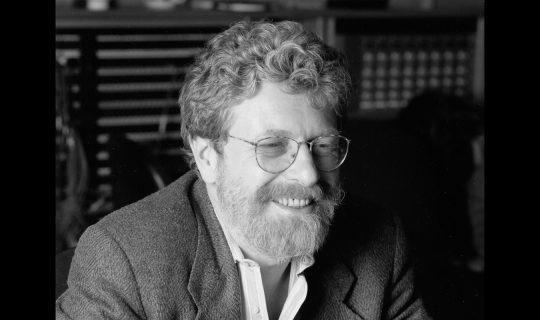November 25, 2012
At the start of her career, Bobbi Humphrey could’ve easily represented any number of turning-point milestones in jazz. On the back of her first LP, 1971’s Flute-In, she was touted by WLIB-AM program director Connie Thomas as a direct challenge to a male establishment of flautists (“All right, men, but no more monopoly—these are changing times”). The fact that she broke through at such a young age was also noteworthy; her first sessions at the Van Gelder studios took place a few months after she turned 21, and at that point she’d already received encouragement from Dizzy Gillespie, gigged with Duke Ellington, and run the gauntlet of the Apollo Theater’s star-making Amateur Night. But even considering the circumstances of her pioneering status as the First Lady of Blue Note and the draw of her youth-movement cachet, there’s the status of her musicianship itself, and the context it played a part in—namely, the mainstreaming of soul jazz’s increasingly funk-driven direction towards blockbuster crossover success.
While Flute-In made Bobbi Humphrey‘s name, 1972’s Dig This! solidified her rep. The obvious points of comparison between the two albums jump out: leading off with a recent-vintage Bill Withers standard (a driving cover of “Lonely Town, Lonely Street” being a logical followup to Flute–In‘s “Ain’t No Sunshine”), leaning heavily on interpretations of pop and R&B hits (lively takes on Barrett Strong and Norman Whitfield‘s sinuously anxious “Smiling Faces Sometimes” and Stevie Wonder‘s giddy “I Love Every Little Thing About You”), and pulling together an appealing, mellow triangulation of jazz, soul and easy listening. Humphrey’s individual style really comes together on this record. She emerges as someone who values nuance over flashiness, capturing the essence of the lead-singer voices her flute emulates on the R&B covers and putting an evocative voice to wordless melody on the more jazz-indebted numbers. “Is This All?” is probably the best exhibition of what she’s able to do with a simple motif—three-note figures that float lightly yet vividly, eventually unfolding into swooping solos that reveal an ecstasy behind the delicacy.
The personnel on Humphrey’s first two albums fit her well, whether they were veterans stretching their legs (Flute-In featured the likes of Lee Morgan, George Duvivier, and Hank Jones) or an ensemble cast of versatile sidemen (Ron Carter, Alphonse Mouzon, and Warren Smith on Dig This!) whose best years as bandleaders were just around the corner. Yet it was her third LP, 1973’s Blacks and Blues, that would set the direction for the remainder of her time at Blue Note and break her through to an even wider crossover audience, much in the same way that trumpeter Donald Byrd‘s Black Byrd had done the year before. Blacks and Blues slots in neatly next to Byrd’s smash hit for reasons beyond the alphabetical: both LPs shared the direction, production and sonic imprint of the Mizell Brothers, Larry and Fonce. And exactly a week before the band entrusted with the task of creating the follow-up to Byrd’s all-time Blue Note bestseller convened in Hollywood’s Sound Factory to cut Street Lady, they recorded the session that would give Humphrey a new, heavy-funk context—and the finest album of her career.
Blacks and Blues isn’t so much a study in contrasts as it is a collage of complementary elements, as Humphrey’s piercing yet billowy flute is juxtaposed with weightier elements for it to soar above. Fonce Mizell, Jerry Peters, and Freddie Perren helm a succession of pianos, synthesizers, clavinets, and a Fender Rhodes that are equally at home pushing through the feverish tension of “Chicago, Damn” and the urban-bucolic breeziness of “Harlem River Drive.” It’s this dynamic that makes Blacks and Blues what it is—an intricately communicative keyboard section sprawling out into its own ensemble-bound excursions, while still setting the table for Humphrey herself to answer their solos with statements of her own. If it was that instrumentation which gave the album its improvisational pull, the pop appeal came largely through the inclusion of harmony-drenched vocal appearances from the Mizells, Perren, Chuck Davis and, on the Sylvers-esque “Just a Love Child” and the heartbreak meditation “Baby’s Gone,” Humphrey herself. Her high-pitched voice seems to lie somewhere between youthful, carefree independence and a more subtly savvy knowingness, an impression that seems reflected in the tone of her flute. Occasional flashes of bitter sharpness lie concealed inside the elegance of her presence.
That approach would carry through to Humphrey’s last two albums for Blue Note, albeit subtly altered. After Larry Mizell composed all six cuts on Blacks and Blues, 1974’s Satin Doll saw a shift back to the mixture of new compositions and old standards that had characterized her previous work. The covers revealed a good range—a wide-brims-and-platforms take on the Ellington/Strayhorn title track, and a faithful version of “You Are the Sunshine of My Life” where her flute not only emulates but draws out new nuances to the melody originally meant for Stevie Wonder‘s voice. And while the moods were still split between Cadillac-sized get-down numbers (“New York Times,” “Fun House”) and gauzy ballads (“San Francisco Lights,” “Rain Again”), Humphrey’s playing tied it all together with a style that could draw out gentleness in funk and liveliness in slow numbers. When she met those methods halfway, she pulls you in like little else: “My Little Girl,” her poignantly sung and masterfully played tribute to her young daughter, could be the only lullaby to translate perfectly into a Dirty South hip-hop beat (it was sampled for Ludacris‘s “Hard Times”).
1975’s Fancy Dancer built off those strengths and piled on lavish, eclectic production touches—a bigger horn section, flourishes of Latin percussion, the harp of Dorothy Ashby—that proved to be the funkiest possible farewell to Humphrey’s collaborations with the Mizells. A bit more groove-oriented and bass-heavy than her previous works, this album was crafted in a way that fit the classic ’70s split of an upbeat side one for dancefloors, and a relaxed side two for bedrooms. Regardless of the context, the rock-solid backbeats and dense arrangements only gave Humphrey more space to explore and more heights to ascend over. Fancy Dancer was her most explicitly commercial-sounding album to that point, though it still holds up as a showcase for the groove-meets-improv strengths of the best quality jazz-funk and compares favorably to Humphrey’s post-Blue Note efforts, which were marked by a couple of disappointingly slick pop-disco-leaning LPs for Epic. (That, and a notable guest appearance providing the flute solo for—who else—Stevie Wonder on “Another Star,” a highlight of his Songs in the Key of Life.) Like the contemporaneous, Mizells-inflected works by Donald Byrd, Bobbi Humphrey‘s Blue Note LPs revealed that crossover aspirations and emotionally resonant, technically accomplished, personably creative work weren’t mutually exclusive. Those were changing times—but Humphrey was making that change herself.




